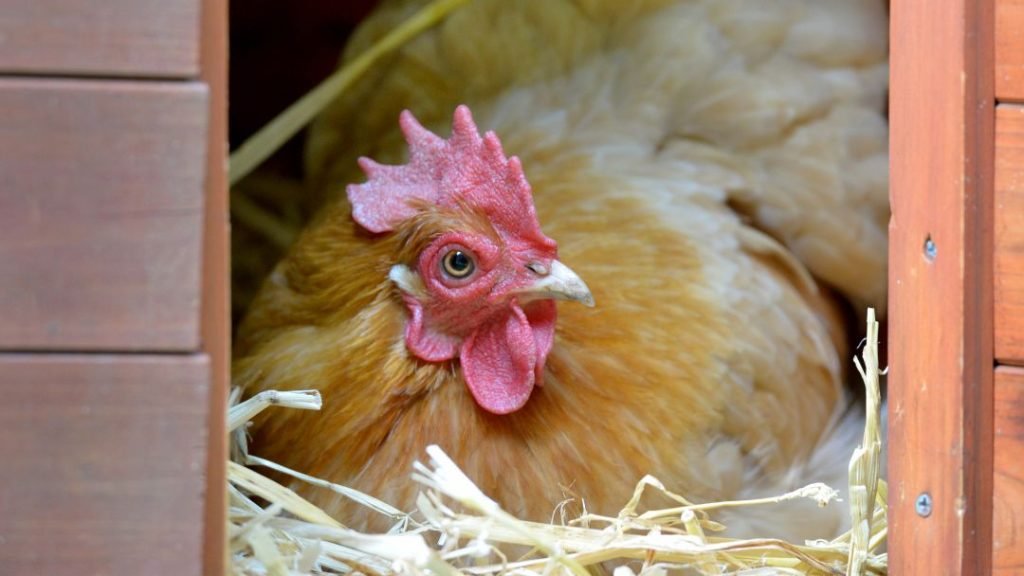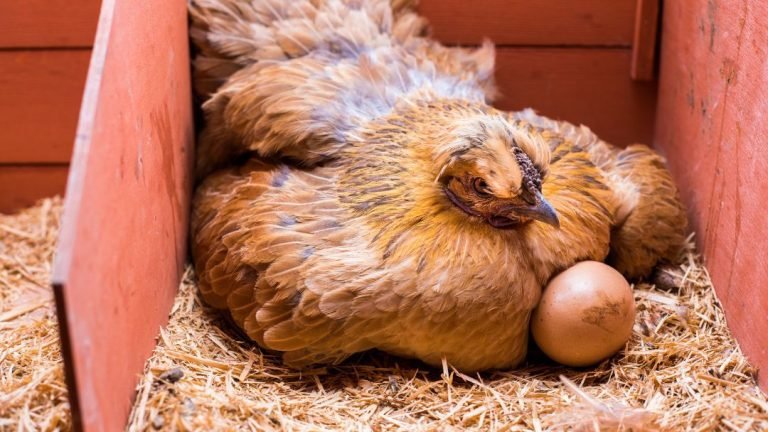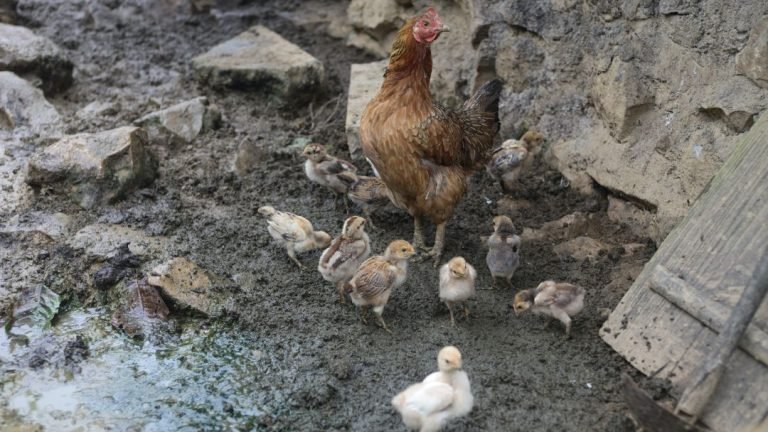Are you thinking of adding some nesting boxes in your chicken coop? Choosing the right-sized nesting boxes is vital depending on your chicken’s size. Many new chicken keepers often ask this question: how wide should chicken nesting boxes be?
Chicken nesting boxes should be 12 inches wide for regular-sized breeds. But it can be around 10 inches wide for smaller breeds and 14 inches for heavier breeds. However, the ideal width depends on various factors, such as chicken size, using purposes, number of chickens, chicken nature, coop size, surrounding environment, nesting box design, etc.
How Wide Should Chicken Nesting Boxes Be
A chicken nesting box should be 12 inches wide, 14 inches tall, and 12 inches deep for common breeds.
But heavier breeds will need larger space. Their box diameter should be 14 inches wide, 14 inches tall, and 12 inches deep.
On the contrary, smaller or bantam breeds don’t require too much space. They can sit comfortably on 10-inch-wide, 12 inches-tall, and 10 inches-deep nesting boxes.
However, when you want hens to hatch eggs, they need more space. It should be 14 inches wide, 16 inches tall, and 14 inches deep.
Let’s recap them on a small table.
| Breed Type | Ideal Nesting Boxes Diameter |
|---|---|
| Bantam Breeds | 10- inch wide x 12- inch tall x 10- inch deep |
| Standard Breeds | 12- inch wide x 14- inch tall x 12- inch deep |
| Heavy Breeds | 14- inch wide x 14- inch tall x 12- inch deep |
| Broody Hens | 14- inch wide x 16- inch tall x 14- inch deep |

What Factors Affect The Width Of The Chicken Nesting Boxes?
As a conscious chicken keeper, you can’t randomly select the width of the chicken nesting boxes.
The following factors must be considered when choosing a particular wide chicken nesting box.
01. Chicken size
The first important factor that determines how wide should chicken nesting boxes be is chicken size.
Heavier breeds need more space, whereas smaller species require minimal space.
The body length of a mature chicken can be anywhere from 8 to 20 inches. They weigh around 4 to 10 pounds.
The larger the body length, the more space is required. The following table shows the average body length of various chicken breeds.
| Breed Type | Average Body Length |
|---|---|
| Bantam Breeds | 8 to 12 inches |
| Standard Breeds | 12 to 16 inches |
| Heavy Breeds | 16 to 20+ inches |
02. Using Purposes
Chicken keepers generally use nesting boxes for collecting eggs or hatching eggs.
If you just want to collect eggs from the hens, they should not be too wide. You can follow the size as mentioned earlier chart.
But, when you want to use it for brooding, it should be at least two inches wider than the standard options.
If you have only common chicken breeds, 14 inches wide, 16 inches tall, and 14 inches deep.
But, heavier breeds will be more comfortable if the nesting box’s diameter is 16 inches wide, 16 inches tall, and 14 inches deep.
This provides enough space to accommodate all baby chicks.
03. Number Of Chickens To Keep
You can keep one to six chickens in a single nesting box.
When you prefer to add one nesting box for each hen, they can be smaller than regular-sized.
To keep more flocks in a bird box, they must be wide enough to accommodate them.
However, keeping too many chickens in a single nesting box is not a good idea. They may fight among themselves to claim their territory.
Sometimes, hens may lay eggs somewhere else if they have to wait too long to lay eggs.
04. Chicken Nature
Some chickens need more space than others. It is not because they have a large body.
Instead, these flocks prefer larger spaces to sit and lay eggs comfortably. This is more common in aggressive chickens.
They often don’t prefer to share their territory with other new flocks.
If growing these chickens in a good number, keep the nesting boxes a bit larger to feel comfortable.
Make sure to add a partition to give personal space and privacy to each bird. They will think they have their nesting boxes.
05. Chicken Coop Size
The width of the chicken nesting boxes often depends on your chicken coop size.
A larger chicken coop can accommodate bigger nesting boxes.
Hence, you won’t mind keeping the nesting boxes a little bit wider than the standard options.
But when your coop size is small, and you prioritize saving space, it can be a little bit smaller.
However, the bird boxes should not be too small, not accommodating all chickens.
Make sure to calculate the diameter accordingly to provide them with sufficient space.
06. Surrounding Environment
Too wide chicken nesting boxes may attract more dust and dirt to enter the nesting boxes.
Pests flies, and predators may give more interest in visiting the nesting boxes regularly.
Chicken keepers will have to clean them more frequently.
However, if the nesting boxes are covered with a locking system, wider nesting boxes won’t be a problem.
You will open the bird boxes in the early morning and close them by mid-morning once all hens have laid eggs.
07. Nesting Box Design
Chicken nesting boxes are available in various designs, such as individual nests, group nests, open-design nests, rollaway nests, trap nests, etc.
They vary in size and body structure. For example, open-design nests are pretty simple.
They have a wide opening without any cover. These boxes come in a square or rectangular shape. You can make them largely wide to accommodate several flocks.
Rollaway nests are more advanced nesting boxes with two, three, or four partitions. You can easily and effortlessly accommodate four to six birds.
Group nests are huge. They generally have a shelf-based design, which is attached or set up in one chicken coop wall.
They can be as wide as you want them to be. Just divide the nesting box properly to provide each flock with enough space separately.
08. Inside Or Outside Set Up
Have you decided to set the chicken nesting boxes outside? It appears to be a practical choice to save space inside the chicken coop.
Are there any predators outside? Is the outside environment too dusty? Can your hens lay eggs comfortably during the colder months?
When you want to keep the chicken nesting boxes outside, they should not be too wide.
Otherwise, it will make the bird boxes dirty quickly. You have to change the nesting boxes and clean them more often.
Plus, too-wide nesting boxes may attract predators or other birds at night when your chickens are inside.
It is a solid rule of thumb to install enclosed nesting boxes with a locking system for the outside.
Can Your Chicken Nesting Boxes Be Too Wide?
Making the nesting boxes too big can be a serious problem. Hens may fight among them when they share the same box among themselves.
Plus, they are likely to break their eggs while walking in each other territory.
Besides, too wide nesting boxes may result in poor hatch rates. Cool air may get inside the nesting boxes and make the eggs cold.
On top of that, hens will feel confused about which eggs belong to them. They may put a conflict to claim the eggs.
This will create an imbalanced ecosystem. Due to an unsecured environment, some female chickens may be discouraged from hatching eggs.
Can Your Chicken Nesting Boxes Be Less Wide?
Chicken nesting boxes with limited width may appear good for smaller chicken cooper to save space.
But, the width should not be less than 14 inches for regular chickens. Otherwise, they will feel uncomfortable sitting properly and laying eggs.
Flocks generally prefer a safe and cozy environment for laying eggs and roosting.
It can be a problem when several chickens sit simultaneously on the same nesting box to lay eggs.
Sometimes, some may lay eggs somewhere else if it is too crowded. They may feel hot and struggle to breathe properly.
What Should Chicken Nesting Box Opening Size Be?
The openings of the nesting boxes should be at least 8 inches wide and 8 inches long for common breeds.
It works like a door to let chickens enter the nesting boxes. But don’t be confused between a chicken nesting box’s opening size and width.
They are two different aspects. The width of a chicken nesting box is the place where chickens sit to lay eggs.
If you want several chickens to use the same nesting boxes, the opening size should be 10 to 12 inches.
However, heavier breeds will need more space to enter the bird box. For a single hen, it should be at least 10 inches.
The opening size should be 14 to 16 inches for several heavy breeds.
Wrapping Up
Are you still wondering how wide should chicken nesting boxes be? We have already outlined the ideal size for a chicken bird box.
Before choosing a particular option, consider all the important factors we have already mentioned. It should not be too wide or less than the requirement.
Hopefully, this post will help you select the best size for nesting boxes. Make sure to cautiously measure the diameter to provide the hens with the right amount of space.







